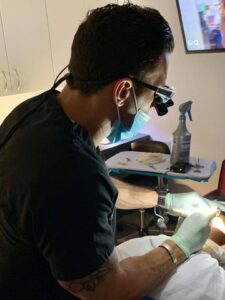The Graft Game – Why Bigger Isn’t Always Better in Hair Transplants
Hair transplants have come a long way in recent years, and understanding the intricacies of grafts is vital for those considering this transformative procedure. In recent years, it seems there’s a race among some clinics to boast the highest number of grafts for a single procedure. While it might sound appealing on the surface—more grafts must mean more hair, right? —this metric can be incredibly misleading. The emphasis on sheer numbers often clouds the more critical factors that determine a successful hair transplant outcome.
The fundamental flaw in the “more is better” philosophy lies in the manipulation of graft counts. Some clinics resort to splitting two or three hair grafts into single hair grafts to inflate the overall number. While this tactic may artificially boost the graft count, it does not equate to a denser or more natural-looking result. In fact, the opposite is often true.
In the context of hair transplants, a graft refers to a small unit of tissue that contains hair follicles and the surrounding support structures. These grafts are meticulously extracted from areas of the scalp with healthy hair growth, typically at the back and sides, known as the donor area. The aim is to transplant these grafts to areas experiencing hair thinning or balding, known as the recipient area.
Each graft typically contains one to four hair follicles, with the number depending on the patient’s hair type, density, and the surgical technique employed. These grafts are delicately handled to preserve their integrity and ensure successful transplantation.
By dividing multi-hair grafts into individual units, clinics may create the illusion of a higher graft count. However, this approach compromises the overall density and aesthetic outcome of the procedure. A successful hair transplant is not just about quantity; it’s about achieving a balanced, natural-looking result that complements the patient’s facial features and hairline.
Another concerning aspect of the graft count obsession is the potential for overharvesting donor areas. Extracting an excessive number of grafts can deplete the donor supply, limiting future treatment options and increasing the risk of visible scarring. A responsible approach to hair transplantation prioritizes long-term viability and sustainability over short-term gains.
 As the Chief Surgeon at Leonard Hair Transplant Associates, my mission is to educate patients on the importance of quality over quantity. A successful hair transplant is a meticulous blend of art and science, requiring expertise, integrity, and a patient-centered approach.
As the Chief Surgeon at Leonard Hair Transplant Associates, my mission is to educate patients on the importance of quality over quantity. A successful hair transplant is a meticulous blend of art and science, requiring expertise, integrity, and a patient-centered approach.
Before undergoing any hair restoration procedure, I urge you to consult with reputable surgeons, ask probing questions, and prioritize clinics that prioritize your long-term well-being over short-term gains. Remember, it’s not about the number of grafts—it’s about achieving natural, lasting results that enhance your confidence and quality of life.
Dr. Matthew Lopresti
Chief Surgeon


